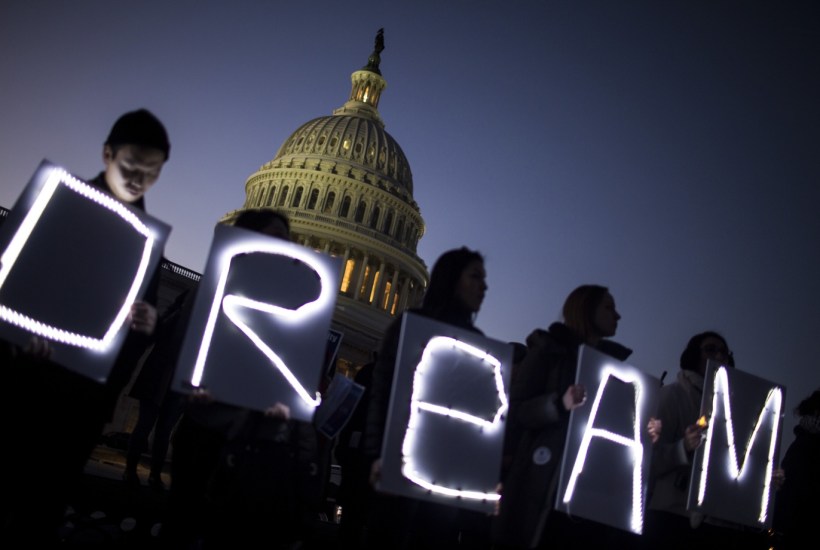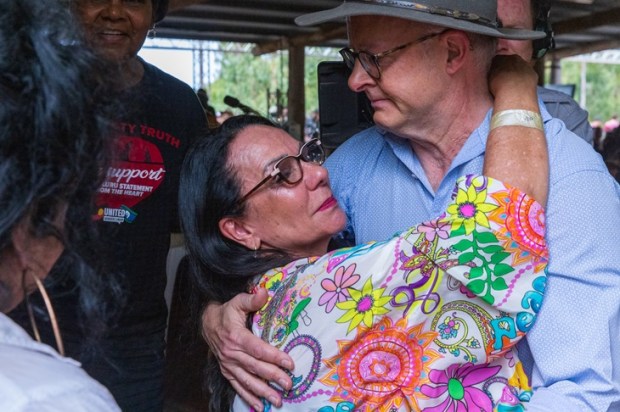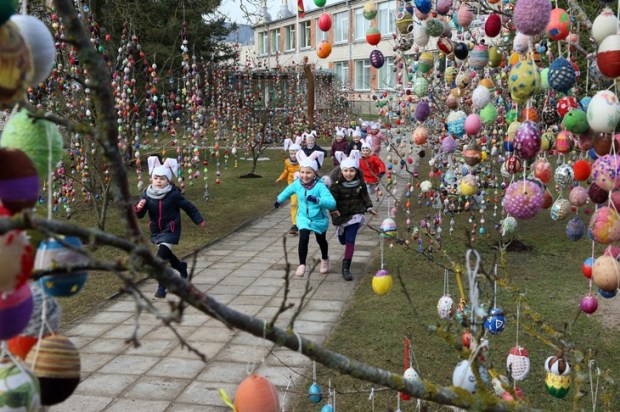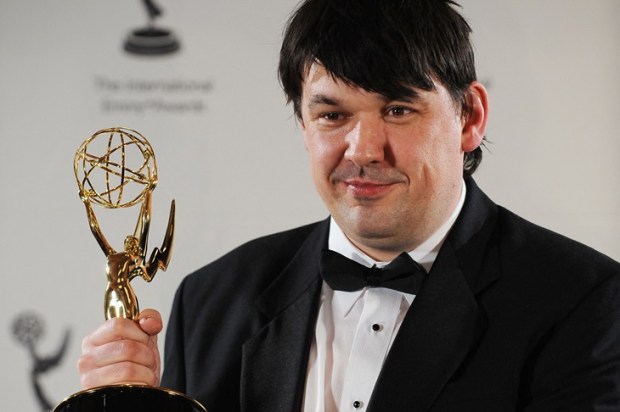The other day The Wall Street Journal carried an op-ed praising America’s immigration project written by two academics, Tellis and Rosenzweig, both (interestingly) professors of marketing.
The article was a puff piece promoting their forthcoming book “How Transformative Innovations Shaped the Rise of Nations: From Ancient Rome to Modern America.”
The thesis of the article – and presumably that of the book – is this:
Openness to outsiders has the power to make or break a civilization. Throughout the past two millennia, nations that admitted and empowered immigrants have flourished, while those that closed themselves off have stagnated and declined.
And here’s a slice of the ‘evidence’:
The Roman Empire regularly conferred rights or even citizenship on peoples that it conquered, welcoming outsiders into the army, bureaucracy and politics—and eventually even to the throne. Immigrants brought resources, talent and cultural dynamism that helped give Rome an edge over other civilizations that rose and fell around the Mediterranean during the same era.
Well, as it happened, demographic decline at the centre of the empire, the inability to raise armies from the imperial heartlands, the embrace of migrating peoples from beyond the periphery, and their absorption into the ‘Roman’ army were decisive factors in the collapse of the empire. In the end, immigration and ethnic diversity doomed the Romans.
What grabbed my attention, however, was less alternative history than the “pic” which headed the story: the one you see above.
It’s a photo of Washington demonstrators supporting “Dreamers”: a category of undocumented child migrants who hope to stay in the USA legally. Be that as it may, the image is arresting for reasons of a deeper symbolism.
A lot of intellectual labour has been expended upon defending liberal immigration programs and applauding the cultural diversification within host societies that necessarily follows. But the learned hoop-la doesn’t bear too much scrutiny.
Nothing illustrates this better than what must be the most thorough and unsettling single piece of research in the field: that undertaken by Robert D. Putnam, famous for his book “Bowling Alone” which analysed community breakdown in the USA.
Putnam’s research into how Americans respond to cultural diversity was done in 2000 but not reported until 2006 when he delivered the Johann Skytte Prize Lecture in Uppsala, Sweden. (You can download a PDF of the lecture here.) It’s a bombshell – and one that Putnam would have been reluctant to drop.
Putnam’s objective was “to explore the implications of [the] transition to a more diverse, multicultural society for social capital” where “social capital” is defined as “social networks and the associated norms of reciprocity and trustworthiness.”
Now, Putnam makes no bones about the fact that he’s on the side of established immigration orthodoxy:
Increased immigration and diversity are not only inevitable, but over the long run they are also desirable. Ethnic diversity is, on balance, an important social asset.
Being, however, a diligent, conscientious scholar, Putnam sets to his purpose with this uncomfortable question:
Yet what about effects on social capital?
Proponents of immigration and the mixing of cultures want to believe that the more contact people have with those of different ethnic and racial backgrounds, the more they will trust one another. Among social scientists, this is known as the ‘contact hypothesis’.
The problem, however, as Putnam readily admits, is that there’s not much to back up that proposition:
For progressives, the contact theory is alluring, but I think it is fair to say that most (though not all) empirical studies have tended instead to support so-called ‘conflict theory’, which suggests that … diversity fosters out-group distrust and in-group solidarity.
More than that, Putnam’s own research shows that the consequences for social capital are actually worse than those predicted by ‘conflict theory’.
In a huge, multilayered US study, Putnam and his team found that:
- the greater the ethnic and racial homogeneity of a community, the more its members trusted other (ethnic/racial) groups;
- the more ethnically and racially diverse the communities in which people lived, the less they trusted other groups; and
- the more ethnically and racially diverse the communities in which people lived, the less they trusted their neighbours.
So far, so good. ‘Conflict theorists’ could congratulate themselves. Putnam seemed to be proving their point. But then along comes a kicker of a finding that shattered the ins-vs-outs simplicity of their model:
- the more ethnically and racially diverse the communities in which people lived, they less they trusted members of their own group!
Putnam sought to explain the data thus:
Diversity seems to trigger not in-group in-group/out-group division but anomie or social isolation. In colloquial language, people living in ethnically diverse settings appear to ‘hunker down’ – that is, to pull in like a turtle …
Diversity does not produce ‘bad race relations’ or ethnically-defined group hostility, our findings suggest. Rather, inhabitants of diverse communities tend to withdraw from collective life, to distrust their neighbours, regardless of the colour of their skin, to withdraw even from close friends, to expect the worst from their community and its leaders, to volunteer less, to give less to charity and to work on community projects less often … to huddle unhappily in front of the television … Diversity, at least in the short term, seems to bring out the turtle in all of us.
Here, I think, Putnam was too anxious to soften the blow to immigration true believers. He contrives to diminish the role diversity plays in inter-group conflict by distracting our attention from that particular problem with the hitherto unseen and frightening spectacle of intra-group anomie.
Putnam’s research, however, confirms the connection between diversity and inter-group conflict. It’s just that ‘conflict theory’ doesn’t cut the mustard as a way of explaining the breadth and depth of social pathologies of which diversity seems to be the catalyst. It’s a grim picture that Putnam uncovers – and one that his preference for a narrow alternative interpretation does little to diminish.
There’s a problem, then. What is to be done?
Putnam hypothesizes that the solution lies in allowing individuals to preserve identities important to themselves personally while creating a new, higher identity that unifies all groups within culturally diverse societies.
Two points about this new identity.
First, its newness: we can’t ask them to become like us; rather, we should all become something different from what we are.
Secondly, the burden of defining this new identity, and of bringing it into effect, lies heavily upon the shoulders of government.
What, we may ask, has the state got to do with reshaping our identities? They are ours — yours and mine — not the state’s.
There is a message here about what progressives expect of the state and how they propose to employ it. Though they prefer softer and subtler measures, at least at first, the resolve of progressives to re-design man is no less determined and anti-humanist than that exhibited by a Soviet Communist or a Chinese Maoist.
Which brings me to the “pic”.
Americans are dreamers, quintessentially so. There is nothing they love more than making dreams come true. That’s what it means to be American. They expect, moreover, others to share in their dreams.
Unlike Marx, Lenin and Mao, however, American dreamers are less reliant on ideas forged by the hammering of the intellect than upon free flights of the imagination. As Karl Rove is reputed to have said in 2004 of US foreign policy “we make our own reality.” It was an astonishing claim but faithful to the American project.
Inventing new ‘realities’ is what Americans do, both abroad and at home. And just as the new ‘realities’ contrived since September 11 by US foreign policy have shattered against deeper and perennial things unamenable to reconstruction, so too has the ambition of achieving American diversity struck upon reefs, not far below the surface of human society, that are harder, sharper, and more intractable than the sci-fi social orders imagined by progressive multiculturalists.
The problem for us is that this American dreaming has struck deep roots within Australia’s centre-right politics and powerfully influences, among other things, its commitment to high levels of immigration and the reinvention of Australian society.
When dealing with the consequences of these policies, we are confronted, however, with a practical and not a theoretical problem. Years of patient social science research – recommended by Putnam in response to his own shock findings – and of slowly accumulating tentative conclusions are not required before understanding what the next step ought to be.
When the pot is boiling hard, you lift it off the hob, put it to one side and leave it to settle.
Dare we do it?
Gary Scarrabelotti blogs at Scarra Blog, where this piece also appears
Got something to add? Join the discussion and comment below.
Got something to add? Join the discussion and comment below.
Get 10 issues for just $10
Subscribe to The Spectator Australia today for the next 10 magazine issues, plus full online access, for just $10.


























Comments
Don't miss out
Join the conversation with other Spectator Australia readers. Subscribe to leave a comment.
SUBSCRIBEAlready a subscriber? Log in